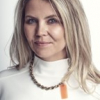
Virgin Media O2 launches summer online safety campaign
Virgin Media O2 and Internet Matters spotlight the importance of having conversations about online safety and starting them early

Industry leaders must help to create an environment in which creativity can thrive

As we return to the office or work-from-home desk post Christmas holidays, despite best intentions it is all too easy to lose control of your good intentions. An influx of emails, Teams messages and LinkedIn notifications, act as a reminder of the chaos that can creep in if proper boundaries are not set.
For most, the best ideas do not strike at the desk, yet time spent in teams meetings on the rise post-pandemic. A trend which underlines the fact that still many working methods are born out of presenteeism rather than effectiveness or creativity.
Where such interruptions are said to be the death of creativity, the onus is on leaders to give space and create an environment where talent can thrive. As January offers a time of reset, we asked industry leaders what are you doing to empower your teams to create better boundaries?

Emails, instant messages, pings, bings and bongs. So. Many. Distractions. They’re not the death of creativity. They are the death of our mental freedom. Little unwanted mosquitos of information buzzing around you every hour of the day. The ‘fyi’s, the ‘urgent’ ones, the ones that simply let you know someone is working…after hours… really late…really, really early. Each and every one requires you to read it, sort it, and invariably delete it. All of which takes you away from arguably the most important moment of your working day. That moment you switch everything off. Relax. And think deeply. That’s why I’m committing to spending more time staring out the window in 2024 and encouraging as many people at Wonderhood Studios to do the same. To do this, we have company wide , socially acceptable, messaging hours. These have been in place for the past three years. No messages before 8am. No messages between 1230-1330. No messages after 7pm. It only happens if everyone does it and needs regular enforcement. But it works. It gives everyone a moment for their brains to take a breath and have ideas. Which is what we are paid to do, after all.

The post-covid work world has brought both challenges and opportunities with boundary setting in the workplace. As many companies adopt hybrid working there’s a rise in shorter, more frequent check in calls which can often interrupt a flow state of working, but working from home also means fewer in-person interruptions.
There are multiple time blocking approaches, such as The Pomodoro Technique, that can be tested to find what suits individuals, but safeguarding and respecting that time is really key to the success. When working from home, our team uses focus calendar blocks to mute virtual chats and other notifications. When in the office, we use a red beret (both stylish and practical) that means no interruptions are permitted whilst it’s worn. Creating a team environment where timeblocking is encouraged and protected benefits both productivity and creativity.

I think it’s pretty clear now that offices are made for account people and not for creative people. The ability to really immerse your creative brain into problems is not helped by the hustle and bustle of an office environment. So whilst there are some big overall cultural wins in getting people physically together in offices again, we have to give creative people more opportunities to find mental and physical spaces that bring the best out of them. We’re now in the unique position to compare and contrast WFH and lockdown with return to offices, and I think it's clear we have to embrace the truth: offices and well meaning people break up mental flow that can be better protected elsewhere.

For me, it’s imperative that my team know they can make decisions on what’s important at any given moment and, equally, what’s not as pressing. Being able to fully focus on what you’re great at is where I ask my team to start and it’s up to me to provide an outlet for anything outside of that. Having a close knit core group, where no one person works in a silo, allows for each individual to feel empowered to create these boundaries knowing there is a team to support where necessary and can act at speed without a need for 100 meetings before we can get moving again. To quote Rick Rubin: “Zoom in and obsess. Zoom out and observe. We get to choose.”

In a world inundated with distractions, from incessant email streams to never-ending notifications, workplace focus is easily lost. This is particularly true for agency creatives, whose primary objective—creative thinking—can be completely derailed by these interruptions.
We shouldn’t subject agency creatives kill their train of thought with boring ol’, never-ending admin. We hire different people with different skills to do different things, and creative teams should be allowed to have as much headspace as needed.
Creatives should be encouraged to consume the actual culture in the world – both physical and digital. A creative cannot be expected to be an ideas monkey if they’re glued to their desk all day. Allow for time to see exhibitions, go to talks, listen to a podcast, watch the new cult TV show that has everyone talking. We can't really be tuned into culture unless we are consuming it ourselves.
I believe in the ability to challenge whether people are really needed in a meeting. If you don’t think you need to be there, then speak up. My old MD wouldn’t turn up to a meeting unless there was an agenda. I loved this. It gave me the ability to push back too.
And finally, a small but powerful change – turn Slack off. Tell whoever you need to tell and do it. Nothing is that urgent. And if it is? Let’s use the good old telephone.

Are interruptions bad for creativity? I don’t think so. In fact, I’d argue we need more of them.
Interruptions are chances to hear diverse perspectives, exchange ideas, get side-tracked, swap anecdotes and jokes, and find inspiration you might be able to use months or even years later.
The issue lies not in interruptions, but in our time constraints. What we need to do is create an environment that allows us to look up from our screens and take in the world around us.
At The Ninety-Niners, we do this by giving creatives sole responsibility for projects, rather than having everyone working on everything.
It’s a quality over quantity approach that means rather than having to deliver multiple solutions on multiple projects (inevitably on a short lead time), they have time to focus on one project.
Those pesky little interruptions go from being annoying distractions that add to their stress to opportunities for new ideas to present themselves.
So, let’s not vilify interruptions, they’re the catalysts for inspiration. And without them, we’re in danger of becoming stagnant.

By ‘creativity’ here, perhaps we mean something like ‘productivity’ or a thing that requires focus – a craft (designing, writing, illustrating, coding). But if we mean creativity in the messy, imaginative, sparky sense – having ideas – then take an hour, day or week and no matter how blissfully interruption-free you keep it, there’s no guarantee you’ll get anywhere good.
There are more lethal things for that kind of creativity – one of which is the commodification of time and, as a result, trying to schedule ideas. (‘You’ve got 7.5 hours of uninterrupted time. Go.’)
But we operate in a commercial reality and the timesheet beckons. To stop that wringing us dry, we’ve created a job number dedicated to soaking up inspiring stuff and messing around – anything that helps creativity flow on demand (07536-02 / Spongetime).
And, yes, set times when we don’t interrupt each other: 12-1pm every day, a scheduled reminder pops up for everyone across the business saying, ‘No Meeting, We’re Eating.’ Because we recognise that idea-time isn’t about units of time, or quantity of time, but about a moment. And there’s no better moment to have ideas than while you’re buttering toast or making a sanner.

As a leader of a team, it’s about me empowering colleagues to know that it is absolutely fine to shut down all other applications and essentially treat creativity as if it were a client.
With so many comms channels available in the hybrid way of working, it’s easy to get distracted by any notification.
And whilst it’s important to ensure a high level of client service at all times, most reasonable clients won’t be expecting an instant reply, so we try and take the pressure away from account teams to feel the pressure to respond straight away. If it’s anything urgent, the senior team will soon get a call.
With a hybrid working approach here at Red Lion, our creative process works way more efficiently in person and the energy in a room when you’re attacking an exciting new brief (away from phones and laptops) is difficult to replicate virtually.
We also organise a whole host of internal and external training sessions for our team to develop their creative skills and will do this at least a couple of times a year.
For me personally, I often block out “thinking time” in my diary so that I can really spend the time to digest a new brief or challenge that’s been put in front of us and try and be as strict as I can to make sure that happens.

Unpopular (and perhaps highly extroverted) opinion but I believe interruptions, far from being the death of creativity, can actually be an accelerant of it. The pandemic and the resultant working from home allowed us to work with minimal interruptions. It maxed our efficiency but did it result in our best creative work….absolutely not.
In a 2019 study by Fast Company of 35 employees, 75% of them reported at least one positive interruption in their working day, and they didn’t even work in the creative industry. Creativity needs feeding, input, reflection, forgetting about and then going back to it..and many of these things come from interruptions. A chat at your desk with another member of the team, an interesting newsletter or substack dropping into your inbox or a ‘do I really have to discuss the brief’ meeting when you’re not quite sure what it is yet can actually open up new lines of enquiry. A creative culture thrives on moments of serendipity… many of which are born from interruptions.
In a world where we have the opportunity to be two days at home and three days in the interruption ‘ridden’ office environment, I feel we may just have inadvertently set ourselves the right boundaries for creativity to thrive.

“I think it depends how we define interruption. Creativity does not adhere to a schedule, and often, people find inspiration or become motivated by life’s little interruptions. These interruptions can inspire the creative process by presenting opportunities to solve problems in new and different ways. That said, it is important to prioritise and set aside time for the creative process. Unwelcome interruptions can be seriously problematic.
I like to think of it in terms of growth. Creativity needs to be given the space and time to thrive, exposed to the right kind of stimulus. Too much overshadowing can stunt that growth and produce a weak creative with little hope of reaching its full potential.
At KWT we have an active creative development process and carve out time for focused thinking and guided ideation. Each year we develop a creative lens to encourage teams to look at challenges with appropriate boundaries.
Establishing effective boundaries for guided ideation can include factors such as defining the size of your collaboration team, focusing on a specific topic or brief, providing an opportunity for questions, setting dedicated time, and allocating a period to evaluate ideas. These boundaries can foster an environment for clear thinking.”

As creatives, we’re guilty of forgetting the importance of having firm boundaries. We’ll often sacrifice our time to perfect and finesse all the small details before completing a project, as our work is truly our pride. But we need to remember that creativity cannot flourish without a suitable environment and headspace. That’s why I encourage my creative teams to take advantage of our flexi-Friday policy, which allows them to finish early and reward themselves after an intense week of brainstorming creative content ideas and bringing them to life. Creative work can be tough, and so setting aside time to focus on things outside of work are so important to prevent burn out and creative blocks.
Ensuring that we understand when we need to prioritise our mental health is imperative to success. As someone who has experienced a sudden bereavement, I truly believe that taking as much leave as you need is essential and can’t be compromised. Taking six weeks from work when I lost a close family member helped my grief in ways that still resonate in my career. This applies to other difficult moments in life, whether it’s mental health or even the flu. Taking the necessary time to recover pays off and I will always encourage my team to do this. Being a manager means caring for your team no matter what, during the highs AND the lowest of lows. I’ve never seen this not pay off in immeasurable long-lasting ways that ripples beyond businesses or industries, and it makes happier, healthier people.

Creativity sparks don't always fly at will, and when you're 'in the creative flow' time can run away from you. That’s why blanketing time boundaries across everyone doesn’t necessarily work. The greatest tool we offer our teams to help them create their own boundaries is trust. As a remote first, flexible working company, we encourage our teams to use this to best suit their individual needs, such as working a compressed week or flexing their schedule around personal commitments, and help enforce those boundaries through transparency within their calendars and Slack statuses to let everyone know when they are and aren't available. We trust our team to create the boundaries that work best for them and honour their time worked. And when our teams work extended hours, we encourage frequent open conversations between line managers and their reports to monitor balance and prevent burnout. To help with this, as a company, we have implemented a No Meeting Friday to ensure dedicated space for all our teams to really focus on their craft with minimal interruptions.

As with all things, context is everything.
Interruptions aren't, by definition, the 'death' of anything. Of course, a bad interruption can drive a sledgehammer into someone's flow - creative or otherwise. It can scare that idea on the tips of your fingers back into the depths of your brain. It can frustrate, annoy, delay and cause unnecessary anxiety. All bad, obviously.
But a good interruption can do the opposite. Let's call it a 'planned distraction' instead.
Planned distractions can be critical to creativity. They can move our conscious brains onto another challenge, brief, client or anything that isn't that 'thing' we've been hammering away at. And in doing so, give ourselves the breathing space required to allow our subconscious brain just enough time to carry on working through it.
You see, our brains are strange and wonderful things. They don't stop working on something when our accessible, conscious brains do. They continue, beavering away. Until, Eureka!
At Recipe, we've started building this into our creative process - a creative oscillation of sorts. Time spent actively working on a brief. Then time is spent actively working on or thinking about something else. Planned. And there will be much more of this in 2024.
Looks like you need to create a Creativebrief account to perform this action.
Create account Sign inLooks like you need to create a Creativebrief account to perform this action.
Create account Sign in